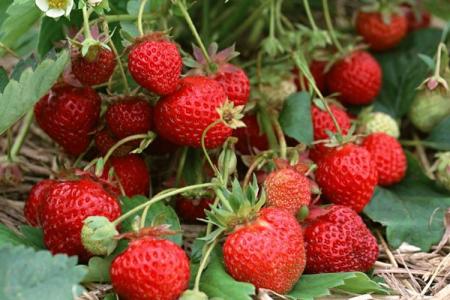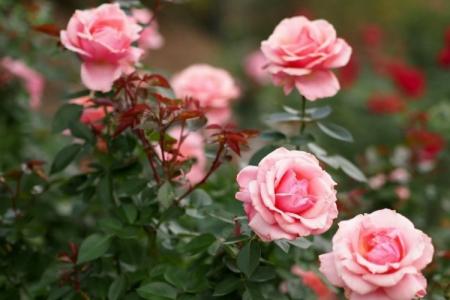
Unfortunately, fruit trees are often susceptible to various diseases. Breeders manage to breed all new varieties with increased immunity, but it is impossible to insure against everything at once. Therefore, in order for pears to grow healthy and productive, you need to immediately familiarize yourself with possible problems. We have already prepared a list of common diseases with descriptions and photos, as well as learned effective treatments!
1. Scab
The main enemy of most fruit crops is the ubiquitous scab. No gardener will be able to completely avoid it, even with an ideal selection of varieties and conditions. Olive spots on the leaves seem velvety, the fruits are covered with dark rot, and later they deform and crack.
Choose varieties that are scab resistant and maintain planting spacing. We regularly loosened the soil, thin out the crowns and, in the meantime, remove the carrion. For prophylaxis, spray pears with Bordeaux liquid three times, and for treatment - with Skor or other systemic fungicides.
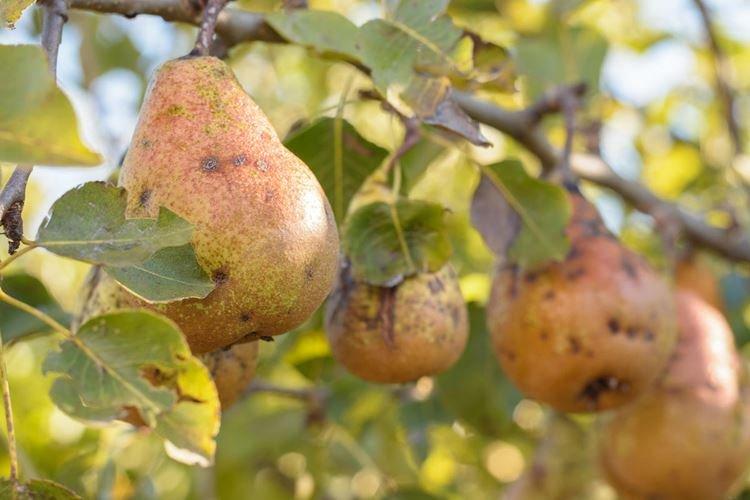
2. Powdery mildew
The fungus is easy to spot, because the leaves of the pear are covered with a whitish, fluffy bloom. In fact, these are myceliums with spores that spread the disease even faster, and the areas themselves dry and die off. Very young shoots and branches tolerate the disease worst of all.
Always remove diseased parts immediately, thin out the crown and treat the sections with antiseptics. A solution of potassium permanganate is a simple folk prophylaxis that is gentle on plants. You can also use soda ash. For a more thorough spraying, specialized fungicides are needed: Fundazol, Sulfite and analogues.

3. Cytosporosis
This type of rot primarily affects the trunk of the tree. The bark turns red, and then gradually dries and cracks. Best of all, the fungus takes root in areas already damaged by the sun or frost.
With a sterile and very sharp knife, carefully cut off the diseased bark, slightly going over the healthy part. Treat with an antiseptic and brush with a mixture of clay and mullein. During the season, inspect trees and remove diseased or dead branches.

4. Moniliosis
This is the same fruit rot that can destroy an entire crop if a couple of infested fruits end up in a storage box. First, brown spots appear on the pear, and then they gradually diverge and become covered with bumps. The fruit becomes a soft and loose carrier, especially in the hot and humid last days of summer.
Thin the crowns in time and make sure that nothing interferes with the air circulation, and also immediately destroy the infected fruits. In the spring, spray the pear with Bordeaux liquid and Hom. Process the planting periodically with milk of lime. Strengthen the immunity of trees with foliar dressing from a complex bio-cocktail.

5. Rust
Rust is easy to spot on any fruit crops due to the bright red spots that are strewn with the leaves. Later, the disease spreads to the fruit - and such pears must be destroyed.
At the end of autumn, be sure to remove leaves and plant sediments, because most of the fungi hibernate in them. In the spring, spray pears with Bordeaux liquid, and before winter, treat everything together with the soil with Urea. During the season, carry out preventive spraying with systemic fungicides 3-5 times.

6. Bacterial burn
This disease is typical for pome crops and manifests itself during the flowering stage. Leaves turn black, inflorescences turn brown and fly around, weak shoots die off, and the bark cracks. Bacteria are most often carried by insects, but sometimes wind and unfortunate neighborhoods are enough. Even resistant varieties then recover for several years.
All affected branches and shoots of the pear must be cut off, capturing the healthy part by 15 cm or more.Treat the sections with a concentrated antibiotic solution and spray the entire tree with it. Use Bordeaux Fluid regularly throughout the season - up to 9-10 times if needed.
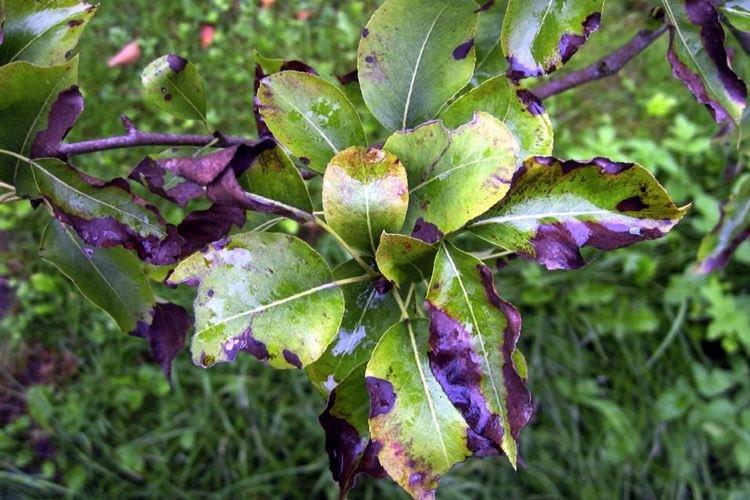
7. Sooty fungus
A specific fungus is characteristic of pears and some other fruit crops. A black bloom is visible on the surface, which really looks like soot. It disperses more actively on trees affected by aphids, which secrete sugary substances.
At first, the disease affects weak plants, so it is important to strengthen the immune system and fertilize the plantings. Always use insecticides against aphids and other pests like Calypso. At the same time, spray the pear with a mild fungicide like Fitoverm.
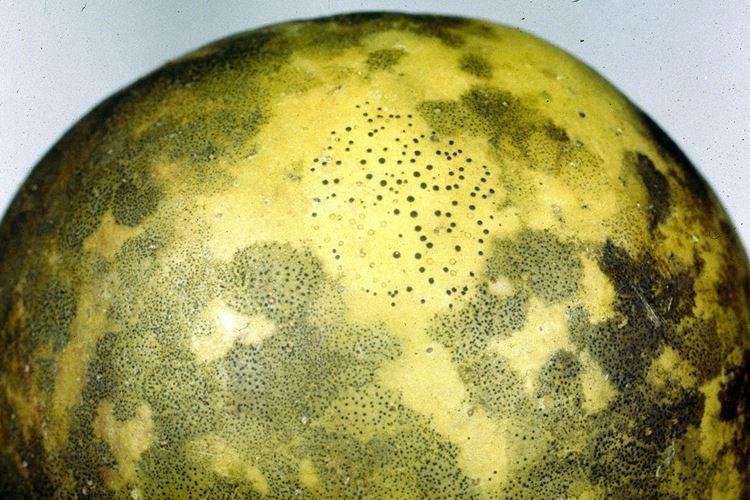
8. Black cancer
The disease affects the branches and trunk of the pear with brown spots, which darken, crack and burst to cambium. Cancer can develop for several years, and is usually accompanied by other infections, because weakened immunity and open wounds are susceptible to any fungi and microbes.
Diseased wood cannot be cured, so it must be completely cut out along with the healthy part around it. Treat the knife with an antiseptic, and the wound with copper sulfate. Cover the damaged area with a garden mixture of clay and mullein.


